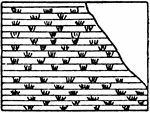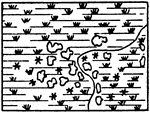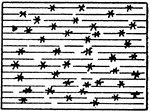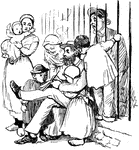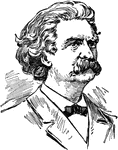
Samuel Langhorne Clemens
American writer who wrote classics such as The Adventures of Huckleberry Finn, The Adventures of Tom…

Sophia Dorothea of Hanover
Sophia Dorothea of Hanover (16 March 1687 – 28 June 1757) was a member of the British Royal Family,…
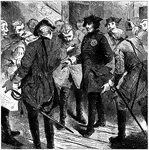
Frederick II of Prussia
An illustration of Frederick II of Prussia attempting to find lodging for the evening. Frederick II…

Lord Burleigh's Tomb, Stamford
Lord Balfour of Burleigh, in the County of Kinross, is a title in the Peerage of Scotland. It was created…

James the First
He ruled in Scotland as James VI from 24 July 1567, when he was only one year old, succeeding his mother…
Hampton Court, 17th Century
Hampton Court Palace is a former royal palace in the London Borough of Richmond upon Thames, south west…
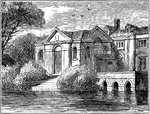
Gunpowder Conspirators' House, Lambeth
The Gunpowder Plot of 1605, or the Powder Treason, as it was known at the time, was a failed assassination…
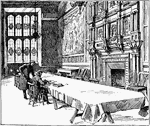
The Jerusalem Chamber
According to Holinshed, it was predicted that Henry IV would die in Jerusalem; Shakespeare's play repeats…
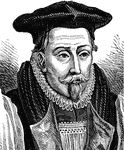
Bishop Lancelot Andrewes
Lancelot Andrewes (1555 – 25 September 1626) was an English clergyman and scholar, who held high positions…
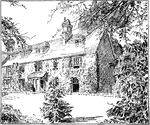
George Herbert's Rector House, Bemerton
George Herbert (April 3, 1593 – March 1, 1633) was a Welsh poet, orator and a priest. He went…
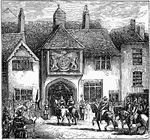
Fairfax Taking Possession of Cochester
In 1189, Colchester was granted its first Royal Charter by King Richard I (Richard the Lionheart.) In…
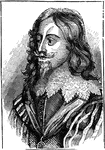
Charles I of England
Charles I, (19 November 1600 – 30 January 1649) was King of England, Scotland and Ireland from…
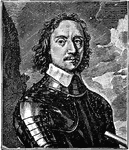
Oliver Cromwell
Oliver Cromwell (25 April 1599 Old Style– 3 September 1658 Old Style) was an English military…

Hereford Cathedral
In the war between King and Parliament (the English Civil War) the city of Hereford fell into the hands…
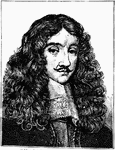
Charles II of England
Charles II (Charles Stuart; 29 May 1630 – 6 February 1685) was the King of England, Scotland,…
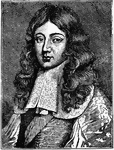
James, Duke of Monmouth
James Crofts, later James Scott, 1st Duke of Monmouth and 1st Duke of Buccleuch (April 9, 1649 –…
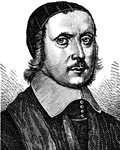
Bishop Jeremy Taylor
Jeremy Taylor (1613 – 13 August 1667) was a clergyman in the Church of England who achieved fame…
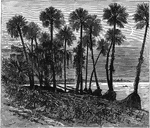
Scene of the Murder of the Huguenots by Menendez
Scene where Pedro Menendez de Aviles, an explorer and founder of St. Augustine, murdered the Huguenots…
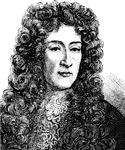
James II of England
James II of England and Ireland, James VII of Scotland (14 October 1633 – 16 September 1701) was…
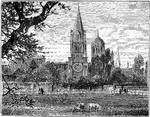
Oxford Cathedral
In 1522, the priory was surrendered to Cardinal Wolsey, having selected it as a site for his proposed…

Traitor's Gate, Tower of London
The name Traitors' Gate has been used since the early seventeenth century, prisoners were brought by…
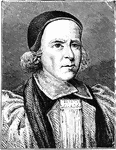
Archbishop William Sancroft
William Sancroft (30 January 1617 – 24 November 1693), was the 79th archbishop of Canterbury. He became…
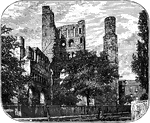
Ruins of Kelso Abbey
Kelso Abbey is a Scottish abbey built in the 12th century by a community of Tironensian monks who had…
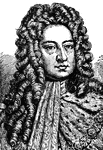
King George I of Great Britain
George I (28 May 1660 – 11 June 1727) was King of Great Britain and Ireland from 1 August 1714…
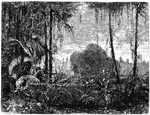
Everglades
The Everglades is a subtropical wetland located in the southern portion of the U.S. state of Florida,…
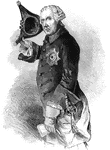
Frederick II of Prussia
A portrait of Frederick II of Prussia in his military uniform. Frederick II (January 24, 1712 –…

Frederick II of Prussia on Horseback
An illustration of Frederick II of Prussia on horseback. Frederick II (January 24, 1712 – August 17,…
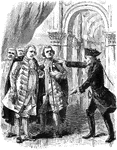
Frederick II of Prussia and Judges
An illustration of Frederick II of Prussia and the unjust judges. Frederick II (January 24, 1712 –…

Usual Appearance of George III. About 1776 (From a sketch by Gear.)
George III (George William Frederick; 4 June 1738 - 29 January 1820) was King of Great Britain and King…
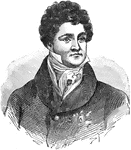
George IV
George IV (George Augustus Frederick; 12 August 1762 - 26 June 1830) was king of the United Kingdom…

Bishop Reginald Heber
Having taken holy orders in 1807, he took up the family living of Hodnet in Shropshire. In 1809 he married…
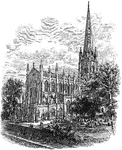
Trinity Church
Trinity Church, at 79 Broadway in New York City, is a historic full service parish church in the Episcopal…

Partown Prawn
Parktown prawn is the familiar term South Africans use for Libanasidus vittatus, a monotypic king cricket…
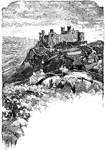
Harlech Castle
Harlech Castle, located in Harlech, Gwynedd, Wales, is a concentric castle, constructed atop a cliff…

Hanover Courthouse
Hanover County Courthouse is the place where Patrick Henry practiced law and argued the case accusing…

Elizabeth I of England
Elizabeth I (7 September 1533 – 24 March 1603) was Queen of England and Queen of Ireland from…
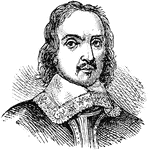
Oliver Cromwell
Oliver Cromwell (25 April 1599 Old Style– 3 September 1658 Old Style) was an English military…
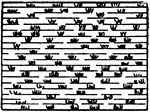
Fresh Marsh
The typical representation of a marsh in general (or fresh marsh) on a topographical map.
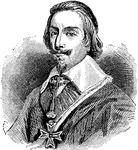
Richelieu
Armand Jean du Plessis de Richelieu, Cardinal-Duc de Richelieu (September 9, 1585 – December 4, 1642),…
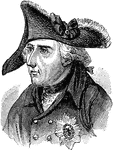
Frederick II of Prussia
Frederick II (January 24, 1712 – August 17, 1786) was a King of Prussia (1740–1786) from…
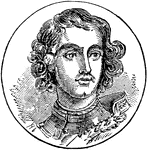
Peter I of Russia
Peter I the Great or Pyotr Alexeyevich Romanov (June 1672–8 February 1725) ruled Russia and later…
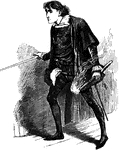
Hamlet
An illustration of a young Hamlet. Hamlet is a tragedy by William Shakespeare, believed to have been…

Rall's Headquarters
Johann Gottlieb Rall (ca. 1726 - December 26, 1776 ) was a German colonel in command of Hessian troops…

Field Mouse
The Meadow Vole (Microtus pennsylvanicus), sometimes called the Field Mouse or Meadow Mouse, is a small…

King's Bridge in 1860
The King's Bridge, erected in 1693 by Frederick Philipse a local Lord loyal to the British Monarch.…

View at King's Mountain Battleground
The Battle of Kings Mountain, October 7, 1780, was an important Patriot victory in the Southern campaign…

Monument on King's Mountain
The Battle of Kings Mountain, October 7, 1780, was an important Patriot victory in the Southern campaign…
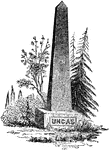
Uncas
Uncas (c. 1588 – c. 1683) was a sachem of the Mohegan who through his alliance with the English…

Swamp Sparrow
The Swamp Sparrow, Melospiza georgiana, is a medium-sized sparrow. Adults have streaked rusty and black…

Van Cortlandt Manor House
Originally, it was an 86,000-acre (350 km²) tract granted as a Patent to Stephanus Van Cortlandt in…
Maria Pia Bridge
The Maria Pia bridge (Ponte Maria Pia) is a railway bridge built in 1877 by Gustave Eiffel in Porto,…
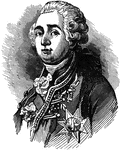
Louis XVI
Louis XVI (23 August 1754 – 21 January 1793), Louis-Auguste de France, ruled as King of France…

Louis XVI Memorial Medal
Louis XVI (23 August 1754 – 21 January 1793), Louis-Auguste de France, ruled as King of France…

Warren's Monument
Warren's Monument was created in memory of Mason and fallen Bunker Hill hero Dr. Joseph Warren in 1794…
